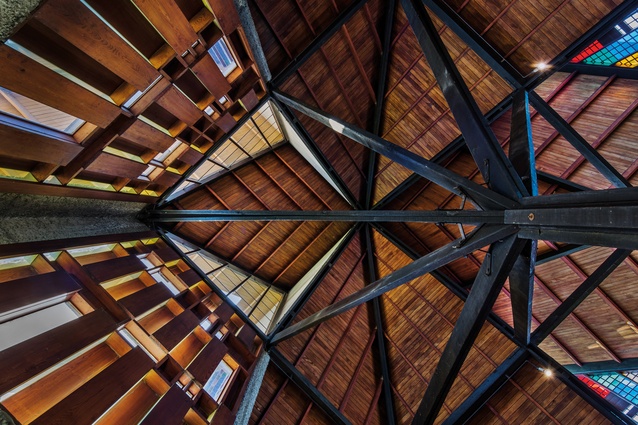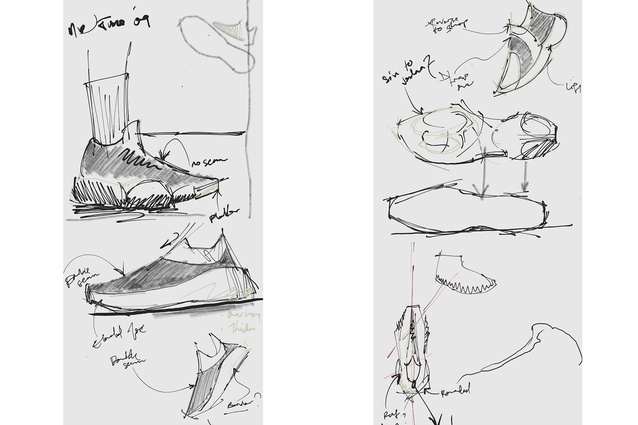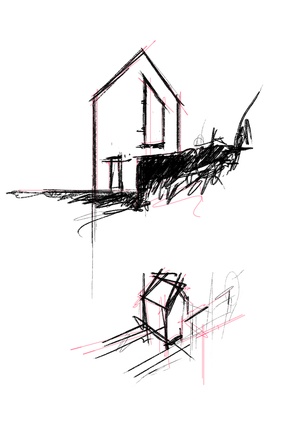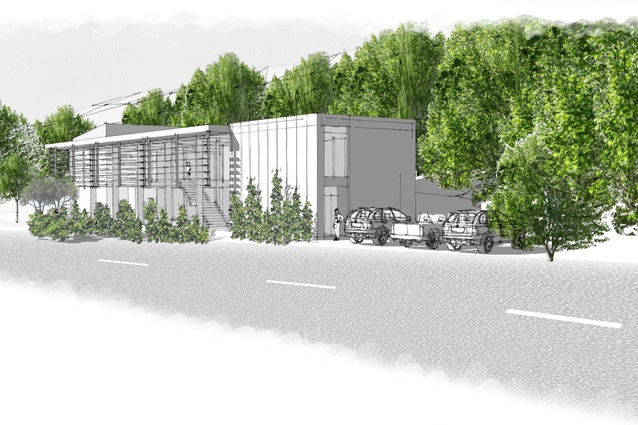Love and basketball: Michael Vaisigano
Michael Vaisigano is a Māori/Samoan designer at Ignite Architects' Wellington studio. After a stint as a professional basketball player, he fell into architecture after being inspired by the work of the late John Scott. We caught up with him to hear about how his heritage has influenced his designs and what advice he'd give to young Pasifika students.
How did you decide to get involved in architecture? Have you always had an interest in space/the built environment?
Michael Vaisigano (MV): I’ve always been intrigued by the field of art and design and all the forms that it was presented to me in. I remember being fascinated at a young age by a talented uncle who was a hyper-realist Māori artist and observing stories my cousins would tell through the art of carving. On my father’s (Samoan) side, I was in awe of my family who could turn their hand to weaving – and the beauty in the traceries of Samoan Tatau.

Basketball was my first love growing up, and a component of the sport that captivated me was the footwear associated with it. I would analyse the material and sketch and illustrate some of my favourite releases. I envisaged myself working alongside athletes for Nike or Jordan Brand as a shoe designer – and it was this love that drove me to eventually pursue higher education in design.
As a Hawkes Bay native, I became interested in the works of the late John Scott, which heavily influenced my decision to then pursue my post-graduate studies in architecture. As a child growing up in a culturally diverse household, I was constantly observing how different built environments can influence and prompt people’s behaviour, thinking, and movement while occupying these spaces.
Did you face any challenges when deciding to pursue architecture at the university level?
MV: I wasn’t the most studious of pupils throughout high-school and left without any formal qualifications. No-one in my immediate family had ever pursued tertiary study – I thought it wasn’t something on the cards for me. There wasn’t any value placed on it at home, or any understanding of how it could be used as a tool to give you options in life. Needless to say, my entry into tertiary education was done through an untraditional route a few years on from leaving high school. It was a culture shock, but consistency was my strategy, and it eventually helped me thrive.
My undergraduate degree was in spatial design, and then, I made the jump into architecture and completed my postgraduate study while working in architectural firms full-time. Trying to get up to speed with new theoretical concepts was a challenge I overcame once I began applying them in the real world. Suddenly, I was able to reflect and compare my learnings and have real conversations around these concepts.
If you could give any advice to other young Māori/Pasifika students wanting to study architecture/design, what would it be?
MV: Aotearoa is a unique part of the world that is constantly growing to reflect and recognise diversity and uniqueness through architecture. Know and understand the unique value you bring and wear this with pride – don’t conceal it. When I was going through both design and architecture school, there wasn’t anyone I could look to for mentorship or support. I was surrounded by plenty of brilliant minds and helpful peers, but there was no one who truly understood or could relate to my perspective and the life I had come from prior to university.
That’s why I decided to become a member of Victoria University’s ‘Alumni as Mentors’ Programme, which I have been a part of for the last five years. Each year I’ve had a mentee with similar experiences to myself, so it’s been powerful to share tactful guidance to them and to see them successfully go out and find employment and further direction in their professional lives.
What have been some projects you’ve worked on in your professional practice that have been personally influential to you? Or influential on your design philosophy?
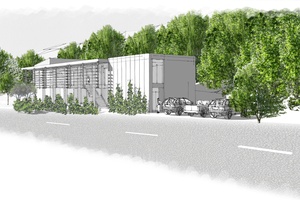
MV: Most recently, I was fortunate to work alongside a talented duo at Ignite Architects on The Zealandia Centre for People and Nature. It’s a learning and research hub located in a residential zone. It will provide flexible spaces to be used for education, research, and community engagement by both children and adults. The design had to support a sustainable ecosystem and significance was placed on environmental protection.
A built environment that fosters a sense of connection to the natural world, promotes sustainable development and encourages conservation of irreplaceable natural resources are all considerations that are all now influential in my design philosophy.
How has your background, both culturally and also your journey to architecture as a career, influenced your approach to design?
MV: My cultural values are the backbone to my design approach. Consciously applying my values has allowed me to be a lot more considered and, in more recent years, empathetic in my design thinking. I draw on my culture where appropriate. In the past, I have referred to Māori proverbs to help form narratives around my work and looked at Fa’a Samoa as a tool for approaching and considering particular environments. This has helped me form a much wider perspective when meeting various design issues, as I can identify and apply this personal consideration to something spatially, architecturally, and ergonomically.
Have you learned any lessons that you now take with you into approaching a project?
MV: One that particularly sticks with is something I learned from a wonderful architect who was the design lead for multiple projects across New Zealand and during her handover of two of these projects to me, she emphasised the need for having an empathetic understanding and approach to the proposal. I’ve grown to understand that empathy is crucial to a human-centred design process and allows design thinkers to set aside their own assumptions about the world in order to gain insight into users and their needs.

You work across sectors from commercial and multi-res to smaller renovations and additions. Do you have a preference for one type over the other? Does your design philosophy change much among these sectors? Are there any parts of design that stay constant for you from type to type?
MV: I don’t have a preference in sectors – I’ve worked across most and can confidently say that the purpose of the building, its effect on the environment, and who it’s going to serve are the main drivers that determine how much I get out of the project. A constant for me always comes out in my processes. I still sketch a lot. I think it’s an effective way to express my feelings and organically apply my design philosophy before needing to bring other factors into it. I see buildings as space, and there has to be a human feeling tied to that space — it should be very emotional. I feel like I’m able to make the transformation from how I’m feeling to the physical space more directly through sketching.
Tell us a bit about your work sitting on the Trust for the Futuna Chapel. How did you come to be involved with the Trust? Does the chapel hold special meaning to you?
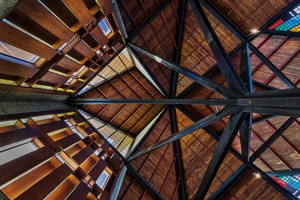
MV: Ten years ago, I was involved in a fundraising project where a team of us assembled pre-laser cut 1 to 50 scale models of the Futuna Chapel to be auctioned off. It was here that I was introduced to Nick Bevin (former partner and previous Director of Bevan + Slessor Architects), who sat on the Friends of Futuna Trust. My path crossed again with Nick in 2017 at the In-situ conference in Auckland. Nick had been recently appointed the Chair of the Trust and after catching up, we discussed my interest in becoming a Trustee. Since April 2017, I’ve worked alongside a passionate group of Trustees who all seek to conserve the building and to make it available on a regulated basis to the public now and into the future. The work I do with the Trust is a way for me to give back for the influential role John Scott had on me in pursuing architecture as a career.
What are your hopes for the future?
MV: Statistically, Pākehā dominate the current pool of registered architects in New Zealand, with Māori and Pasifika sitting heavily at the bottom. I have hopes that there will be a collective effort to see these numbers better reflect our society. We all know the important role that built environments have amongst civilisation – it’s the ‘why’ behind much of the work we as designers and architects do. With that in mind, it’s easy to see how important it is to have diverse voices to help shape our built environment. In the future, I’d love to see those voices contribute more to building a better New Zealand – for all New Zealanders.


